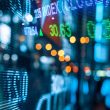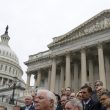KEY POINTS
- The spread of Covid-19 squashed the stock exchange when it became clear it would cause a fast and historical drop in economic output.
- As the economy recovered, the healing was choppy, millions remain unemployed and yet the stock market has risen to record highs.
- The market’s quick gains are based upon optimism vaccines will help return the world to typical in the new year, and services will do well as a result.
- However, strategists say the marketplace evaluations have become distorted and are likely to see a pullback in early 2021 though stocks should end the year higher.
The pandemic turned 2020 into a year of unmatched occasions– not the least of which was the swift crash and then record-fast recovery of the stock exchange.
The marketplace’s race greater has actually remained in stark contrast to an economy that has actually been growing gradually.
Numerous small companies are having a hard time, and more than 10.7 million people are unemployed, according to Labor Department month-to-month data.
However, the marketplace has actually powered greater, fueled by expectations of a period of strong growth after vaccines are extensively dispersed and the economy completely reopens.
SEE NOW VIDEO03:42 Market is going considerably higher in 2021: Capital Wealth Preparation’s Jeff Saut
Those same expectations have actually helped draw in a different accomplice of financiers, a number of the young and new to investing. JMP approximates the brokerage industry added more than 10 million brand-new accounts in 2020, with Robinhood alone likely representing about 6 million.
“One of the important things that the pandemic has underscored more than anything else is that the stock exchange is a positive system,” said Michael Arone, primary investment strategist at State Street Global Advisors. “That’s been the tagline all year long as financiers continue to scratch their heads questioning why the stock exchange could carry out so strongly while the economy, labor market, and profits face such difficulties. It’s more about future expectations than existing conditions. It’s something that investors were loosely knowledgeable about in the back of our minds always.”
The market plunge and its rebound paralleled America’s action to the infection.
There was shock and worry, followed by hope for recovery however with some obstacles along with the method, as the infection continues to spread out while financiers look forward to the vaccine.
The year 2020 started the method it was anticipated to, and then things spoiled quickly in late February and March as the pandemic spread and federal government authorities around the world and in the U.S. shutdown economic activity.
“Normally it takes an unexpected event to trigger the marketplace to get knocked on its ear, and no one prior to the new year, that I can think about, stated we’re going to have an issue with an infection in 2020,” stated Sam Stovall, chief investment strategist at CFRA. “Everyone creates their annual forecast in early December, so if the marketplace was still at an all-time high Feb. 19, undoubtedly a majority of people continued to believe it would be a good year and even with the infection in the background it would not be a world-altering event– and oh, how we were wrong.”
The infection has thrown lots of patterns that were already underway into hyperspeed.
“Whatever was so quick. We went from peak to trough in 33 calendar days, which was three times as quick as the 1987 bearishness. Feb. 19 was the record. It fell 34% in 33 calendar days,” Stovall said. “The Fed said we’re going to do whatever it takes, the marketplace said you don’t battle the Fed and we got to breakeven on Aug. 18, which made it the fastest recovery on record and then we scored 19 brand-new highs considering that then.”

Why a pullback might be lurking
The S&P 500 is up more than 65% because of the March low and almost 16% for the year. The Nasdaq is 44% higher for the year. Stovall and other strategists state it would not be surprising to see a pullback in the early part of the brand-new year, but he and others expect the market to end the year higher.
“Valuations today are trading at a 42% premium,” said Stovall. He was describing the premium above the average 12-month forward price-to-earnings ratio of 16.7 for S&P 500 stocks returning to the year 2000.
“There’s constantly an unusual dichotomy in between stocks and the economy except in the preliminary stages of a recession, when the economy falls dramatically. The preliminary news that the economy is crumbling appears to crush the stock exchange, but the healing is much longer for the economy than it is for stocks,” stated Chris Rupkey, a primary financial-economic expert at MUFG Union Bank.
“The only difference in this stock exchange is the stock indexes have gotten to levels that are at values we practically have not seen prior to. … We have not seen valuations because prior to the internet sock market bubble in the late 1990s,” he included. “It’s OKAY for stocks to be here if a business is going to make a great deal of cash next year.”
Rupkey stated investors indicate the last healing in 2009 and note stocks moved higher ahead of the economic recovery. However, he kept in mind that at the time, valuations were rising among the teenagers, not above 30.
The way investors take a look at the market has also changed, which might be a direct outcome of how the pandemic has impacted the economy.
“Generally, when we go through economic recessions, people wander to customer staples, energies, and health care. … In a conventional decline, you went defensive,” stated Tobias Levkovich, chief U.S. equity strategist at Citigroup. Energies are unfavorable on the year, down about 5%; consumer staples are up 6.9% and healthcare is up 10%.
Levkovich also says it would not be unexpected to see the quickly increasing market drawback in the new year. He said a 10% to 12% retracement is possible.
“The ‘defensive’ in the Covid world became who might grow in an economy where there is no growth,” said Levkovich. That would resemble e-commerce, or Amazon, which is up 80% for the year.
“Defensive implied bulletproof balance sheets with complimentary cash flow, and you ended up purchasing mega-cap tech,” Levkovich said. The S&P information innovation sector is up almost 42% for the year, the best-performing of the major sectors.
“All in one fell swoop, the mega-cap was a big cap, mega cap was defensive and mega-cap was growth,” he stated.
Stay at house vs. recovery
As the market climbed out of its pit, financiers selected stocks that would succeed as people worked from house and children attended school from another location. They punished stocks in services they could no longer delight in– like airlines and cruise ships.
As vaccines became reality, they began to purchase stocks that would succeed in a financial recovery.
“We saw more small financiers get involved in the marketplace, as did all of our competitors across the board, in a manner that we’ve never ever seen before,” said JJ Kinahan, primary market strategist at T.D. Ameritrade. “We saw choices usage increase and people comprehending how to utilize alternatives. … They’re defining their danger, which is something brand-new. Retail investors tend not to do it.”
Kinahan stated retail financiers are also able to trade higher-priced stocks like Tesla and Amazon through the options market. He said a number of the investors are young and brand-new to investing and trading. At T.D. Ameritrade, millennials make up about 30% of its retail customers, an increase of 35% over three years.
As the stock market surged, there was likewise a huge boom in going public, the strongest wave of issuance ever. Investors have also levered their holdings and margin financial obligation is at an all-time high, a prospective contrarian caution.
“Right now there’s this great expectation. The drawback is can we actually live up to what everybody is expecting. What happens to the overall market?” Kinahan stated. He said one concern is can pandemic favorites Peloton and Zoom continue the growth they’ve had after the world returns to normal.
Levkovich said he likewise prefers some locations that will recuperate with the economy.
“I believe the most appealing pail is probably that leisure, hospitality, and entertainment. That’s where the huge need that can’t get pleased is,” he said.









